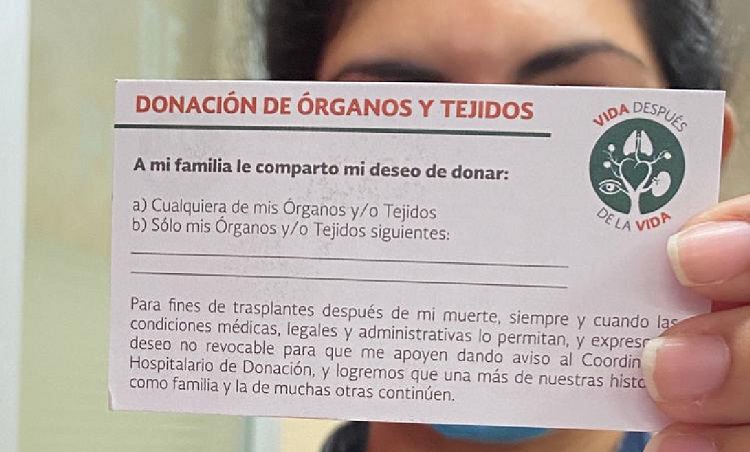It is estimated that the organs and tissues obtained from one single donor can save up to 80 people.
(TIMES MEDIA MEXICO).- So far this year, UMAE Merida has performed 37 kidney transplants, and six deceased person donations, including five multi-organ and one tissue donation.
During the National Organ and Tissue Donation Week, which takes place from September 26 to 30, 2022, the Instituto Mexicano del Seguro Social (IMSS) in Yucatan emphasizes the importance of these actions that not only improve the quality of life of patients, but also solve a very costly public health problem for families and health systems.
A person may need an organ transplant in the event that the organ no longer fulfills its functions, either as a result of an illness or injury.
When an organ transplant is performed, medical personnel remove an organ from another person and place it in the patient’s body.
Organs that can be transplanted include the heart, intestine, kidney, liver, lung, as well as pancreas. In the case of tissues: bone marrow, corneas, skin, bone, heart valves, cartilage, tendons, arteries, and veins can be transplanted too.
“Today, a transplant is a highly developed medical technique that achieves magnificent results for the patients”, explained Dr. Jorge Martínez Ulloa Torres, head of the Transplant Department of the Merida High Specialty Medical Unit (Departamento de Trasplantes de la Unidad Médica de Alta Especialidad: UMAE) of the IMSS in the state.
In this way, the IMSS invites the population to discuss this decision with their families. It is estimated that the organs and tissues of one donor can save or help up to 80 people, hence the importance of altruistic donation.
The UMAE Merida specialist indicated that so far this year, this Specialty Hospital has performed 37 kidney transplants, 12 from cadaveric donors and 25 from living donors; as well as six donations from deceased persons, including five multi-organ and one tissue donation.
Those in need of a transplant usually wait for the organ for a long time, in that sense, doctors must match donors with patients to reduce the risk of transplant rejection, this occurs when the patient’s body rejects the new organ, causing it not to function properly. The living donor is usually a family member, but any person who wishes to donate can do so, as long as it is voluntary, altruistic, free, conscious, and without any remuneration.
On the other hand, a cadaveric donor is a person who, for example, has an accident and brain death is clinically confirmed, which is corroborated by laboratory studies and must be certified by a physician.
Transplant patients can lead a practically normal life, although they must take medication to help prevent their bodies from rejecting the new organ, in addition to adopting healthy habits to avoid health complications.
Living donors must not have major health complications after surgery, so they can also continue with their lives as normal, it is recommended to continue with healthy eating habits and physical activity.
The population interested in becoming a voluntary organ and tissue donor can consult the website of the National Transplant Center: https://www.gob.mx/cenatra/ or go to http://www.imss.gob.mx/salud-en-linea/donacion-organos, where they can register as donors.
TYT Newsroom


